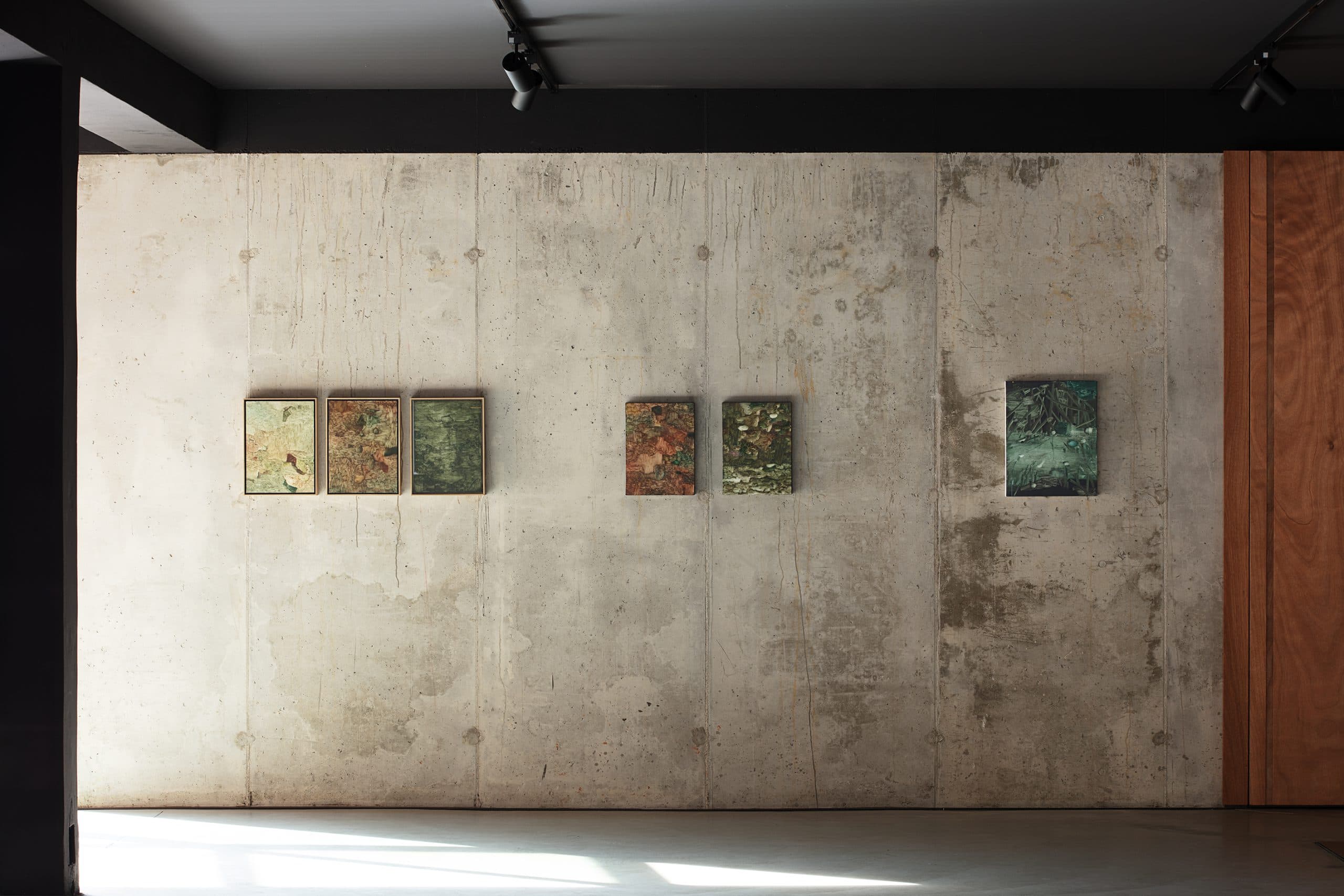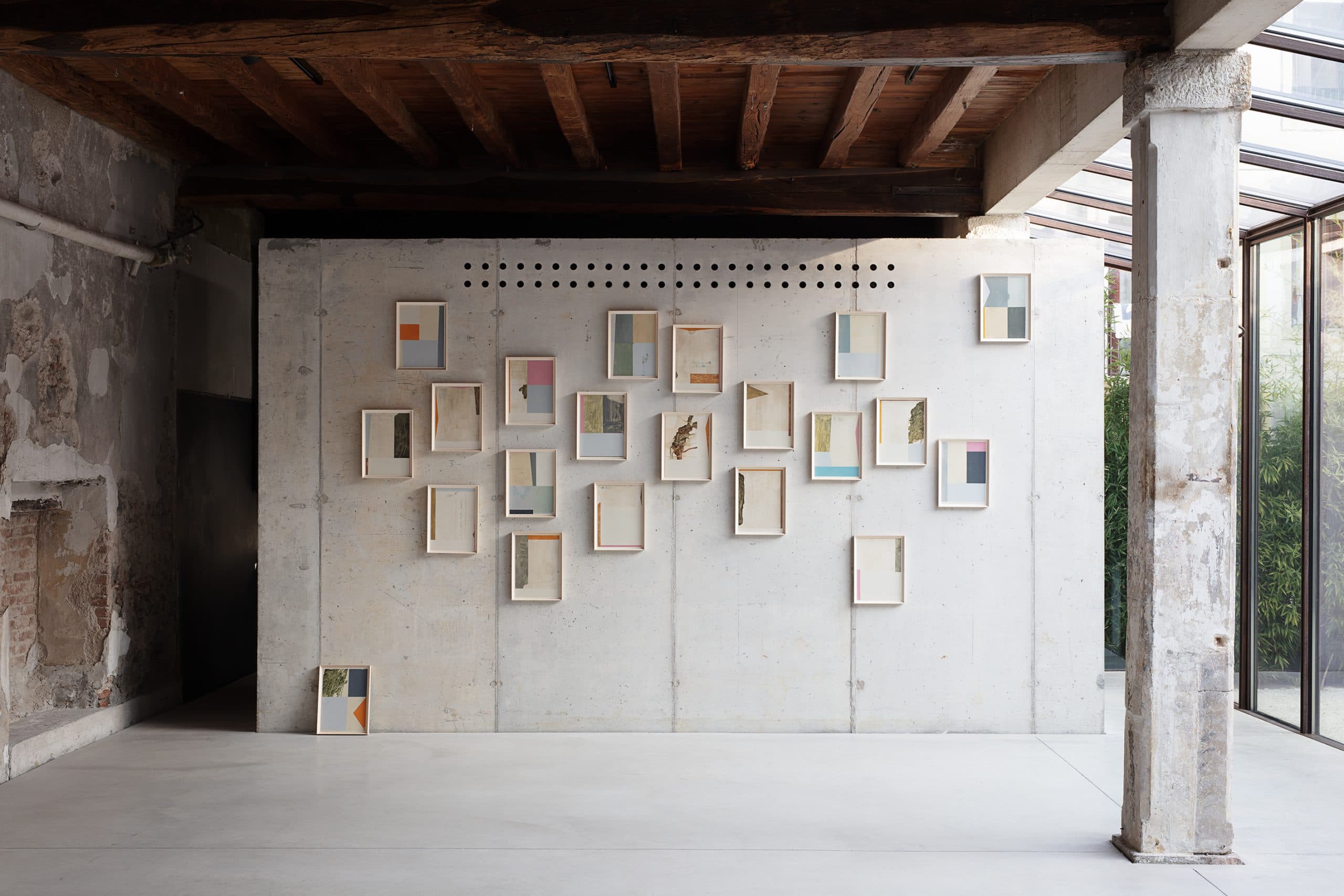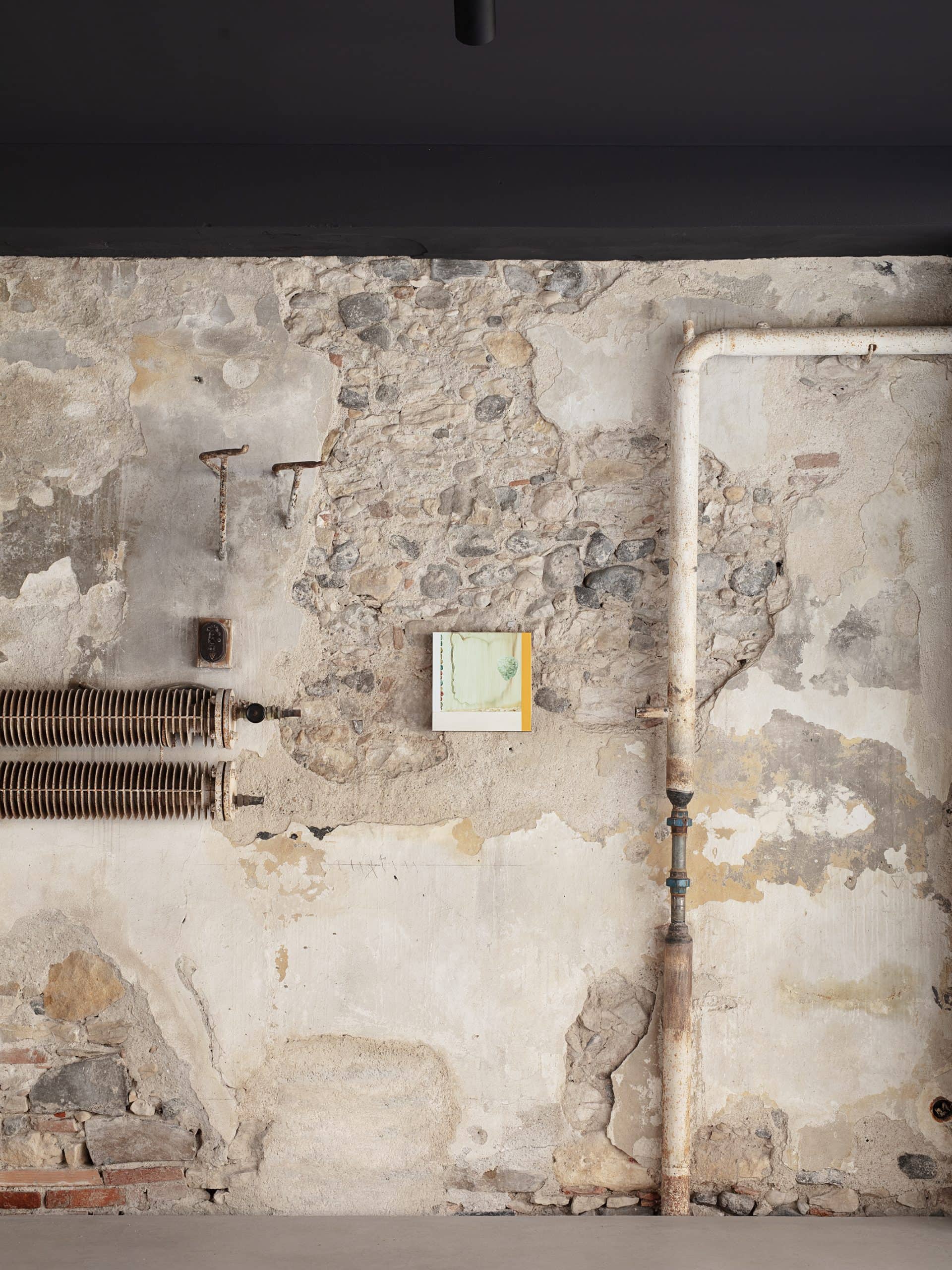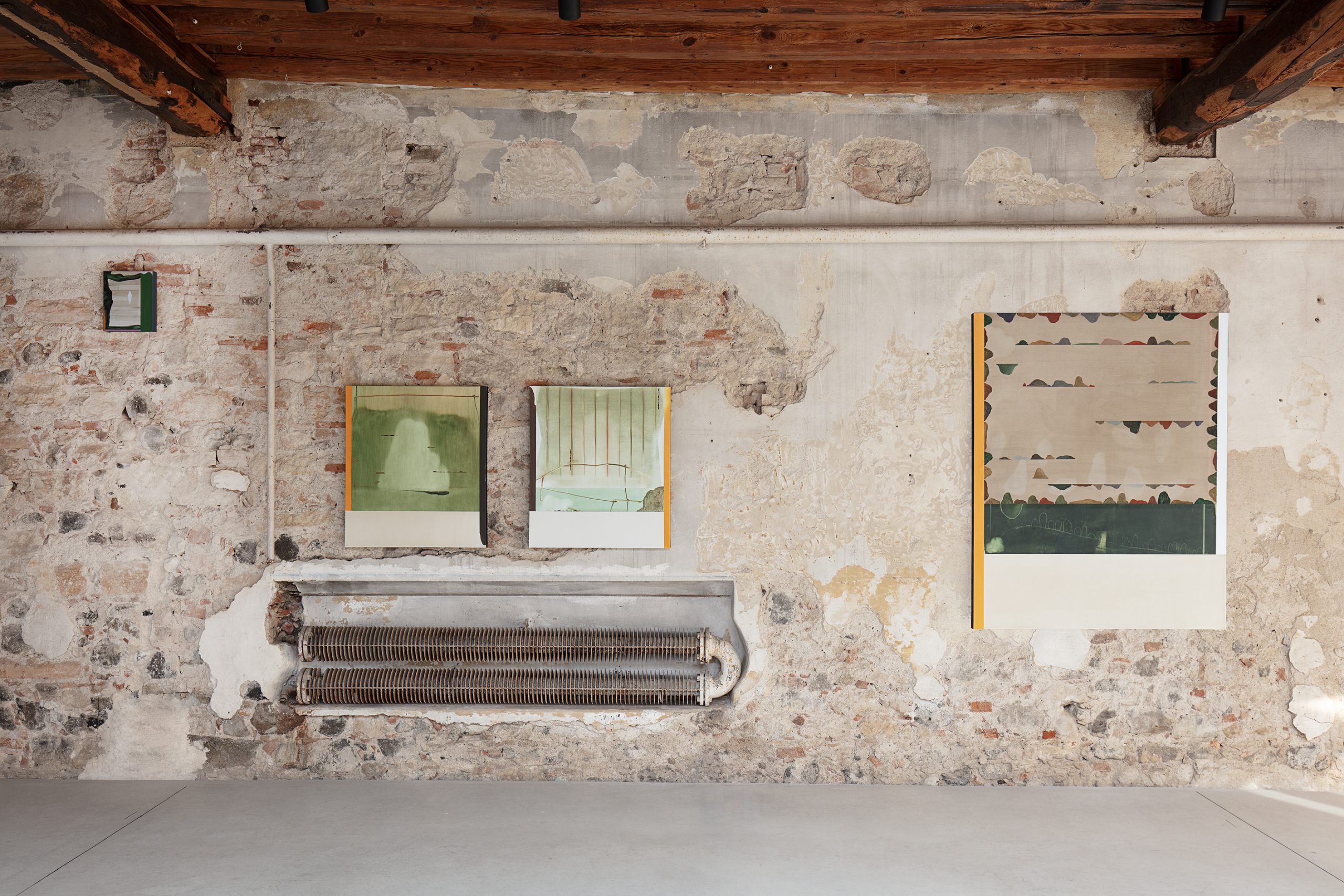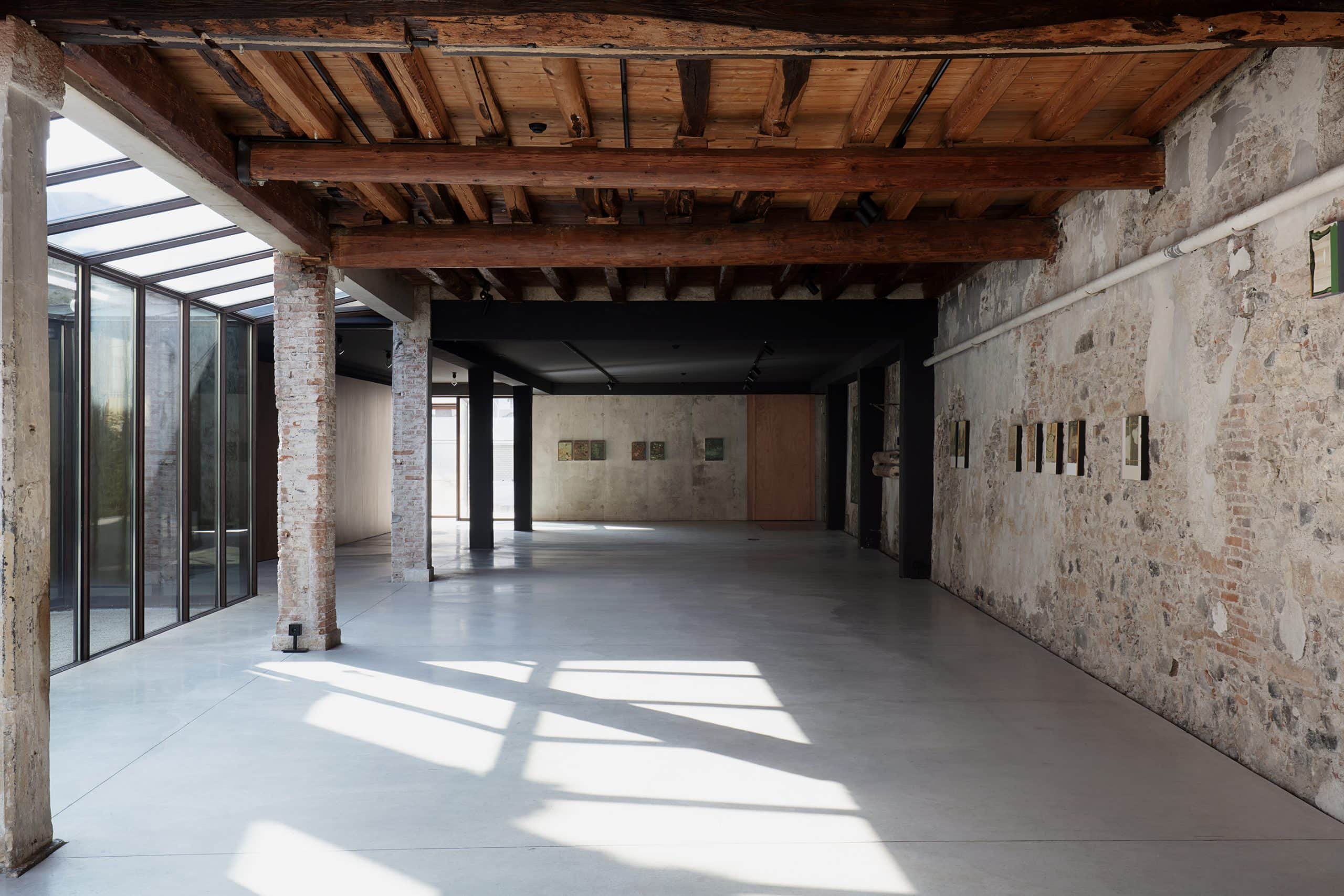Atipografia presents the exhibition Babel, a solo show by Mirko Baricchi (La Spezia, 1970), which builds a visual itinerary through the La Spezia painter’s artistic research of the last ten years.
The exhibition is open to the public through Saturday 18 May 2024 in the gallery’s spaces in Arzignano, an old family print shop that Elena Dal Molin wanted to transform into a contemporary space, entrusting its functional redesign to the architects of the AMAA studio.
The exhibition project involves over twenty works on canvas and paper, many of them new and created specifically for the occasion. Oscillating between painting, graphics, and illustration, Babel traces a narrative arc in the space conceived to restore the different creative phases that have characterised Mirko Baricchi’s production, articulated in true cycles.
The very title of the exhibition, which is inspired by the idea of the Tower of Babel, evokes the image of a stratification of different languages in the same structure that, coming together, creates a new form. The exhibition accompanies the visitor through the artist’s mental process, showing how the different cycles of his production fade into one another without ever fully exhausting themselves, but providing the foundation for the construction of the next phase. Choosing not to articulate his works around a single, definitive subject, Mirko Baricchi explores and decomposes the figure, shining on the true protagonist of his reflection: the painting itself.
In Babel, the artist’s rapid gestural expressiveness is combined with erasures and sudden interventions, achieving a profound balance between drafting and removal of colour and returning an image that oscillates between real landscape and mental space.
Ilaria Sponda: How personal is your work?
Mirko Baricchi: My work is completely personal. I would say so much as to become private, a sort of emotional domesticity. The mask (named “person” in Greek) that most resembles and represents me. Painting is a necessary bridge, to go and to receive, a door so to speak. And apart from style, which is something else entirely, painting is just water after a marathon.
IS: Can you tell us about the series you’re exhibiting at Atipografia?
MB: Babel. It is the latest phase of a production that began almost 30 years ago. It is a fragmented version of a unique but potentially multiform land, a sort of Pangaea, it is linked in a long chain, an attempt to make different echoes, sound carpets, and symbols coexist in works that speak different languages, I believe not in conflict, or who knows. A path, a journey so to speak, during which several decisions were made, mistakes, doubts, the will also to make a sort of synopsis of what I am telling.
IS: Although the work is abstract, the reference never fades. What’s your approach to abstract art?
MB: I don’t think of my work as abstract. I work by presenting shapes and colours, there are many shapes, even the most aniconic ones have a figural meaning. They are simply figures obtained through an empirical and concrete approach with the painting material, and in unison through a philosophical and synaesthetic vision of Nature, my true reference. Abstract Art interests me a lot. It’s a very vast universe though, I’m interested in abstract art but not all abstract artists. But again, I find it very difficult to consider a painting abstract, except for rare examples.
IS: You lived in Mexico for a while. How have those years impacted your art?
MB: I lived in Mexico three years, but I must emphasise one fundamental fact: I was 22 when I arrived, a cosmogony of infinite energy, that was me. I absorbed like a sponge in a tub of water, everything that surrounded me, and certainly several local artists enraptured and fascinated me, the muralists to give an example, Rivera, Siqueros, Orozco, but one in particular rang a siren within me: Rufino Tamayo, what an enormous artist. I even tried to copy him, as emulation, out of esteem. When I returned to Italy, I knew what to do.
IS: What artists are you most inspired by?
MB: Many. Too many. I’ll give you a very concise list, which wrongs a large group of those excluded: Giotto, Courbet, Velasquez, Picasso, Morandi (among the most important), and of course the immense Gherard Richter.
IS: Where does your creative process begin? How does the context influence your work?
MB: It begins from and within nature. Also obviously literature and, for example, cinema, but always about nature, I speak of Spinoza’s Deus Sive Natura, Nature that contains the divine, it’s all within. Then there is a pressing need, painting means a sublimation for me, a sort of psychoanalytic session, which saves me, there must be a place, a better place does not exist when I paint.
IS: Painting is a reflection on painting itself. What does your painting say about painting?
MB: I don’t know. Or rather, I am afraid I can be really rhetorical about it, painting represents the human, it determines the vital essence, it traces footprints for history, our history. Painting has many forms from a conceptual point of view, I for example see what I paint, I do not paint what I see, so for me it is always an experience of research, of action, for another painter, who knows? Painting calls me, it keeps me on my toes, and this fuels it when one responds.
